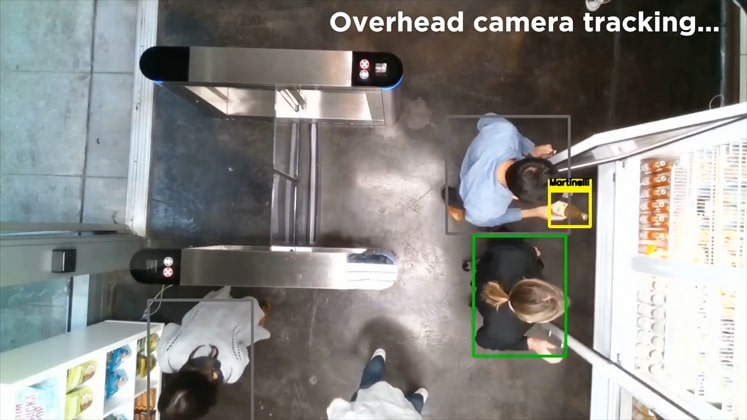News and Features
How checkout-free stores are transforming offline shopping experience
25 February 2020
Apparel Resources

Checkout-free stores are set to revolutionise offline retailing allowing shoppers to enter the store, buy products and then leave without having to pay. This article will explore the technologies that could assist the retailers with a cashless store!
Amazon introduced ‘Amazon Go’ stores that allow the customers to enter the store, buy products and leave without making any payment. The brand’s Just Walk Out Technology shopping experience saves customers from standing in the queue to scan their products and make payments. The technology works with Amazon Go application and uses technologies like camera vision, sensor fusion and deep learning.
The application detects the products when picked up from the shelves and adds them into the customers’ virtual cart, and when kept back, the product is removed from the cart. When the customer has done shopping and leaves the store, his/her Amazon account is charged and the customer is sent a receipt.
The installed application is equipped with technologies like cameras, sensors and RFID that identify shoppers and their items. The combination of all these technologies ensures the safety of the store, as the camera takes the photograph of people who enter the store when items are removed from the shelves and they leave with the items in their hand. The facial recognition technology includes user information and other details like height and weight, user biometrics, username, password and user purchase history.
STANDARD COGNITION

The AI-powered checkouts only utilise a camera and algorithm to make the technology operational. When the customers walk into the store, the overhead cameras identify them by shape and movement, and no facial recognition is used to protect the privacy of the customers. The customers need to open the company’s iOS- or Android-supported app and a special light pattern would flash, allowing the cameras to tie customers to the account and payment method. Finally, the customers are allowed to grab items and leave the store. Eliminating the need to checkout, the system even works without an app through the installed Kiosk screen. The camera of the screen identifies what all items the customer chose and accepts the payment through credit cards or cash.
The system provides benefits like privacy, scalability, experience, flexibility and insights. The technologyconsists of overhead cameras that are simple and quick to install, and also ensures a seamless experience to the customer.
The technology does not include any use of the facial recognition system, ensuring that the customer data collected is safe with the company.It also contains the footage of customers shopping, which is used to review any changes to customers’ virtual basket that they might request, as well as for security footage to be used by the retailer. This footage is not stored permanently and is deleted after 7 days, which is also the time allowed to contest an item on receipts. The only data that remains permanent until prompted by the customers is the information about what items the customers have picked up and put back, which is used to calculate the virtual basket.
ZIPPIN

Zippinuses AI, machine learning and sensor fusion technology for creating a seamless shopping experience. It uses a combination of visual cognition technology with machine learning to accurately account for shoppers’ behaviour and product whereabouts in-store. This is done through overhead cameras with product tracking and using smart shelfsensors for the highest level of accuracy. The technology works through an app that the customers can easily download in their phones and they only have to enter their billing information. The app then generates a unique QR code which the customers scan at a turnstile to enter the store. Once the customers are inside the store, they are allowed to pick up and put back whatever they want and pay for the product that they buy. The technology works by capturing every move of the customers; it keeps track of the products that customers pick up and add to their virtual baskets and charges them online.
For the security of the customers, Zippin only uses overhead cameras to track the customers who appear as dots on the consolidated store map.
The implementation of the technology also helps the retailers in real-time inventory tracking, which keeps the customers and retailers well-informed about the product’s availability and also provides out-of-stock alerts to the retailers. It gives intelligent in-store analytics, briefing retailers of the customers’ activities in the store and provides better accessibility to products. It also provides details of the time spent looking at a product, how the shopper looked at the marketing signage, the product that was picked or that was put back, etc.
Comments

